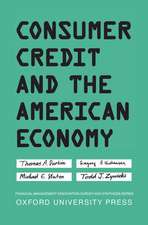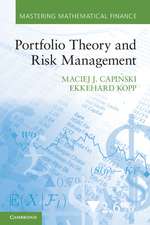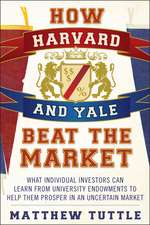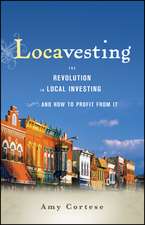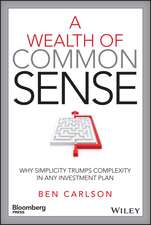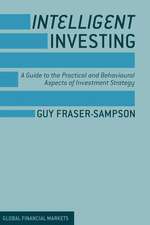Finance and Occupational Pensions: Theories and International Evidence
Autor Charles Sutcliffeen Limba Engleză Paperback – 29 dec 2016
This book is based on the substantial body ofevidence available from around the world on a topic that has becomeincreasingly importantand controversial in recent years. Written forpractitioners, students and academics, this book brings together andsystematizes a very large international literature from financial economists,actuaries, practitioners, professional organizations, official documents andreports. The underlying focus is the application of the principles of financialeconomics to occupational pensions, including the work of Nobel laureates such as Merton, Markowitz,Modigliani, Miller and Sharpe, as well as Black.This book will give readers an up-to-dateunderstanding of occupational pensions, the economic issues they face, and somesuggestions of how these issues can be tackled. The first section explains theoperation of defined benefit and defined contribution pensions, along with somedescriptive statistics. The second section covers selected aspects ofoccupational pensions. The focus of these first two sections is on the economicand financial aspects of pensions, accompanied by some basic information on howthey operate. This is followed by three further sections that analyse theinvestment of pension funds, the corporate finance implications of firmsproviding pensions for their employees, and annuities.
Preț: 350.57 lei
Nou
Puncte Express: 526
Preț estimativ în valută:
67.14€ • 72.65$ • 55.97£
67.14€ • 72.65$ • 55.97£
Carte tipărită la comandă
Livrare economică 09-23 decembrie
Preluare comenzi: 021 569.72.76
Specificații
ISBN-13: 9781349948628
ISBN-10: 1349948624
Pagini: 376
Ilustrații: XIV, 317 p. 120 illus.
Dimensiuni: 155 x 235 x 18 mm
Greutate: 0.47 kg
Ediția:1st ed. 2016
Editura: Palgrave Macmillan UK
Colecția Palgrave Macmillan
Locul publicării:London, United Kingdom
ISBN-10: 1349948624
Pagini: 376
Ilustrații: XIV, 317 p. 120 illus.
Dimensiuni: 155 x 235 x 18 mm
Greutate: 0.47 kg
Ediția:1st ed. 2016
Editura: Palgrave Macmillan UK
Colecția Palgrave Macmillan
Locul publicării:London, United Kingdom
Cuprins
Part 1. Introduction to Pension Schemes.- Part 2. Selected Pension Scheme Topics.- Part 3. Investment and Pension Schemes.- Part 4. Corporate Finance and Pension Schemes.- Part 5. Annuities.
Notă biografică
Charles Sutcliffe is aprofessor of finance at the ICMA Centre, Henley Business School, University ofReading, where he teaches a course on occupational pensions. Between 2001 and2007 he was a member nominated trustee of the Universities Superannuation Scheme(USS), and from 1981 to 1985 a trustee of the Berkshire Local AuthoritiesSuperannuation Fund.
Textul de pe ultima copertă
Occupational pensions are major participants inglobal financial markets with assets of well over $30 trillion, representingmore than 40% of the assets of institutional investors. Some occupationalpension funds control assets of over $400 billion, and the largest 300occupational pension funds each have average assets of over $50 billion. Theassets of UK pension funds are equivalent to UK GDP, and US pension fund assetsare 83% of US GDP. These statistics highlight the importance of pension fundsas major players in financial markets, and the need to understand the behaviourof these large institutional investors. Occupational pensions also play animportant, but neglected, role in corporate finance. For example, US companypension schemes account for over 60% of company market value, and yet they areoften ignored when analysing companies.
This book is based on the substantial body ofevidence available from around the world on a topic that has becomeincreasingly importantand controversial in recent years. Written forpractitioners, students and academics, this book brings together andsystematizes a very large international literature from financial economists,actuaries, practitioners, professional organizations, official documents andreports. The underlying focus is the application of the principles of financialeconomics to occupational pensions, including the work of Nobel laureates such as Merton, Markowitz,Modigliani, Miller and Sharpe, as well as Black.This book will give readers an up-to-dateunderstanding of occupational pensions, the economic issues they face, and somesuggestions of how these issues can be tackled. The first section explains theoperation of defined benefit and defined contribution pensions, along with somedescriptive statistics. The second section covers selected aspects ofoccupational pensions. The focus of these first two sections is on the economicand financial aspects of pensions, accompanied by some basic information on howthey operate. This is followed by three further sections that analyse theinvestment of pension funds, the corporate finance implications of firmsproviding pensions for their employees, and annuities.
This book is based on the substantial body ofevidence available from around the world on a topic that has becomeincreasingly importantand controversial in recent years. Written forpractitioners, students and academics, this book brings together andsystematizes a very large international literature from financial economists,actuaries, practitioners, professional organizations, official documents andreports. The underlying focus is the application of the principles of financialeconomics to occupational pensions, including the work of Nobel laureates such as Merton, Markowitz,Modigliani, Miller and Sharpe, as well as Black.This book will give readers an up-to-dateunderstanding of occupational pensions, the economic issues they face, and somesuggestions of how these issues can be tackled. The first section explains theoperation of defined benefit and defined contribution pensions, along with somedescriptive statistics. The second section covers selected aspects ofoccupational pensions. The focus of these first two sections is on the economicand financial aspects of pensions, accompanied by some basic information on howthey operate. This is followed by three further sections that analyse theinvestment of pension funds, the corporate finance implications of firmsproviding pensions for their employees, and annuities.

